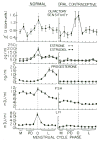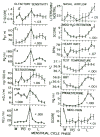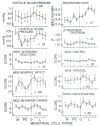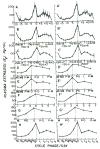Sex differences and reproductive hormone influences on human odor perception
- PMID: 19272398
- PMCID: PMC2693767
- DOI: 10.1016/j.physbeh.2009.02.032
Sex differences and reproductive hormone influences on human odor perception
Erratum in
- Physiol Behav. 2009 Oct 19;98(4):517
Abstract
The question of whether men and women differ in their ability to smell has been the topic of scientific investigation for over a hundred years. Although conflicting findings abound, most studies suggest that, for at least some odorants, women outperform men on tests of odor detection, identification, discrimination, and memory. Most functional imaging and electrophysiological studies similarly imply that, when sex differences are present, they favor women. In this review we examine what is known about sex-related alterations in human smell function, including influences of the menstrual cycle, pregnancy, gonadectomy, and hormone replacement therapy on a range of olfactory measures. We conclude that the relationship between reproductive hormones and human olfactory function is complex and that simple associations between circulating levels of gonadal hormones and measures of olfactory function are rarely present.
Figures














References
-
- Mobius PJ. The physiological mental weakness of women. Alien Neurol. 1901;22:624–42.
-
- Romanes RG. Mental differences between men and women. Nineteenth Century. 1887;21:654–72.
-
- Kimura D. Sex and cognition. Cambridge, MA; MIT Press: 1999.
-
- Halpern DF. Sex Differences in Cognitive Abilities. New York: Lawrence Erlbaum; 2000.
-
- McGuinness D. Sex differences in the organization of perception and cognition. In: Lloyd B, Archer J, editors. Exploring Sex Differences. London: Academic Press; 1976.
Publication types
MeSH terms
Substances
Grants and funding
LinkOut - more resources
Full Text Sources

